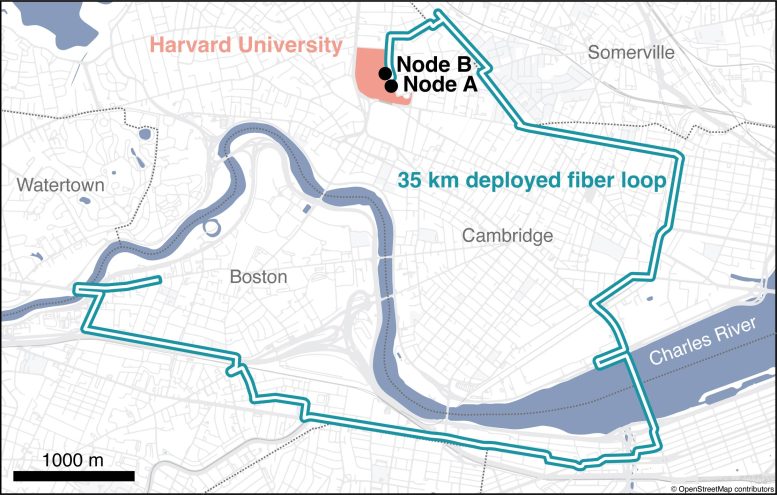
Map showing the path of the two-node quantum network through Cambridge and Boston, Massachusetts. Credit: Can Knaut via OpenStreetMap
Physicists demostrate first metro-area quantum computer network in Boston.
Imagining a quantum internet capable of transmitting hacker-proof information globally through photons superimposed in different quantum states is one thing; demonstrating its feasibility in the real world is quite another.
That’s exactly what Harvard physicists have done. They used existing Boston-area telecommunication fiber in a demonstration of the world’s longest fiber distance between two quantum memory nodes to date. Think of it as a simple, closed internet between points A and B, carrying a signal encoded not by classical bits like the existing internet, but by perfectly secure, individual particles of light.
Groundbreaking Work in Quantum Networking
The groundbreaking work, published on May 15 in the journal Nature, was led by Mikhail Lukin, the Joshua and Beth Friedman University Professor in the Department of Physics, in collaboration with Harvard professors Marko Lončar and Hongkun Park, who are all members of the Harvard Quantum Initiative, alongside researchers at Amazon Web Services.
The Harvard team established the practical makings of the first quantum internet by entangling two quantum memory nodes separated by an optical fiber link deployed over a roughly 22-mile loop through Cambridge, Somerville, Watertown, and Boston. The two nodes were located a floor apart in Harvard’s Laboratory for Integrated Science and Engineering.
Technological Innovations in Quantum Memory
Quantum memory, analogous to classical computer memory, is an important component of an interconnected SciTechDaily